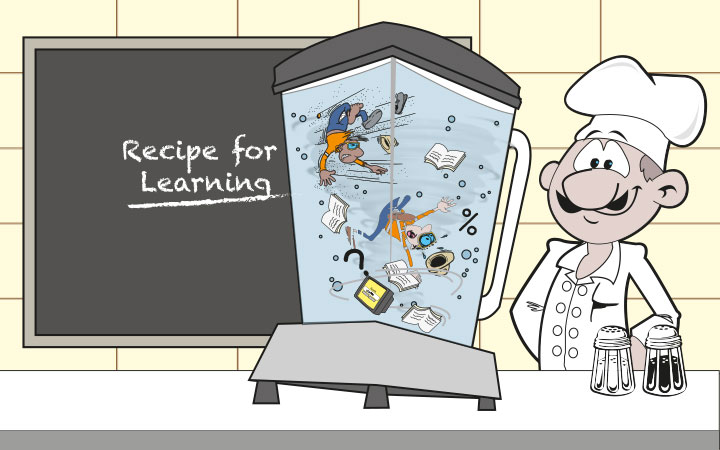Recipe for learning
Ingredients
- 1 need to pass on important information
- 1 topic at a time
- 1-10 learners
- A dash of learning difficulties
- A sprinkle of different training tools to suit experience, attitudes and learning styles.
Method
- Place all ingredients into a suitable learning space and mix well.
If only it was that easy…
Training and learning is like any form of communication. It starts with something that someone knows (the topic) and a need to impart that knowledge (train) to others (learners). So far – still easy…
Now add people into the mix, with their different experiences, expectations, abilities and limitations. Then add in the day to day distractions within our environment, and you start having problems.
The environment is possibly the easier of the issues to address. It starts with setting yourself up for success.
- Make sure everyone knows when (day, date and time) and where (provide a map if training is not on site) the training is to take place.
- Tell participants what the training will include and what they must bring with them.
- Send an email reminder the day before or put up posters in the break room if your participants don’t have access to a computer.
Then set up your training space. An environment conducive to learning will have the following attributes:
- accessible for all learners, including those with a physical disability
- relatively noise and distraction free, away from normal work tasks
- comfortable – enough room, tables or desks and chairs to accommodate the group
- appropriate lighting – can be dimmed for videos if required and bright enough for participants to read and write during the session
- temperature/air flow control
- access to toilets
- breakout spaces if required for group work or quiet contemplation
- safe, designated area for practical demonstrations and practice (area must be accessible for all participants)
- access to refreshments if the training is over an extended period of time
- resources such as a computer, data projector, sound system/speakers, screen/whiteboard, butchers paper and marker pens
- easy access to the Internet and a printer
- access to technical support in case something goes wrong (and it nearly always does).
Make sure that you test all equipment before the learners arrive. Having to apologise for ‘technical difficulties’ is not only distracting and time consuming but also unprofessional.
Overall you are after a relaxed atmosphere and an environment that is welcoming, engaging and ready for the session.
Now to tackle those tricky learners….to be continued.
Sources:
1. Biech, E, 2005, Preparing Your Training Environment, Training for Dummies, http://www.dummies.com/how-to/content/preparing-your-training-environment.html
2. Townsend, HJ, 2010, What are your ‘essentials’ and ‘nice-to have’s’ for a training room, Training Zone, http://www.trainingzone.co.uk/anyanswers/what-are-your-essentials-and-nice-haves-training-room

